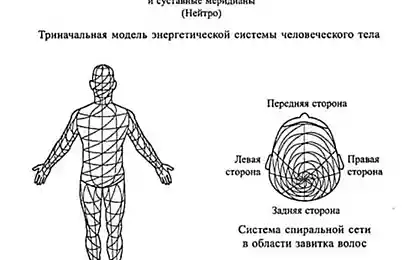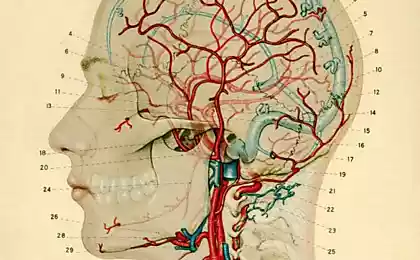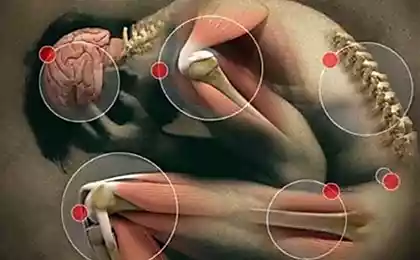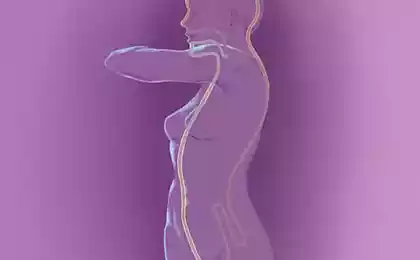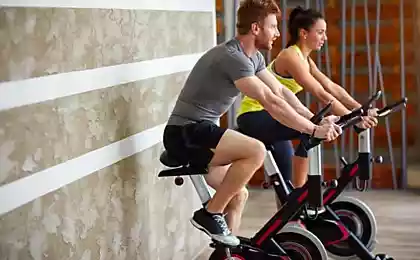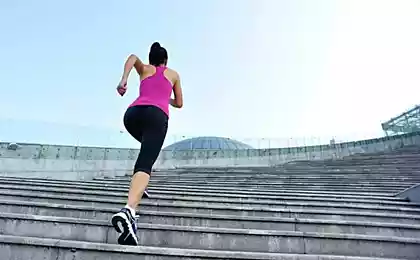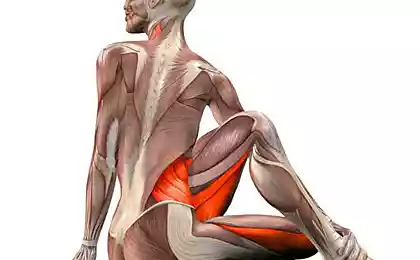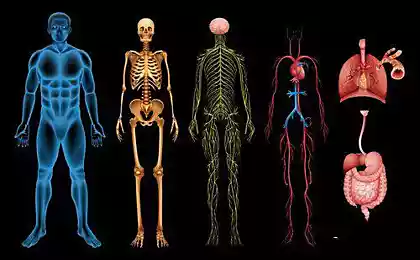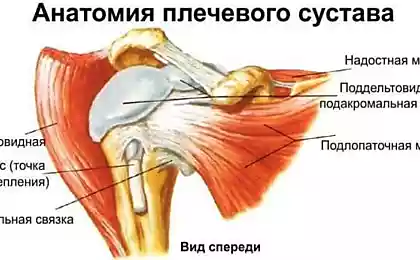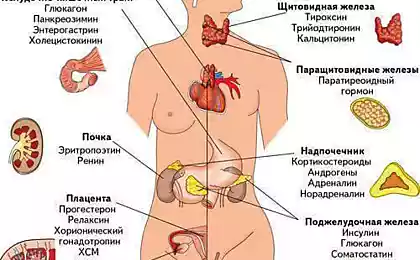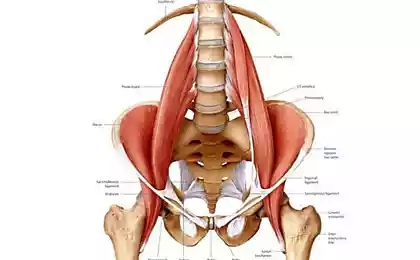567
These 5 movements will determine your physical fitness
Poor balance and coordination, weak or inflexible hands, hip and legs, poor posture, and lack of power cortex — all factors arising from physical inactivity, which lead to the fact that people stumble, fall, get injured, their health deteriorates and there comes a premature death.
Most people do not realize the deterioration of their physical form, yet they will not have an accident or they lose the ability to move as before. Of course, nothing is impossible, but at this stage, the proverbial reversal it will be much harder to do.
Fortunately, there are very simple tests that will help you to understand the current state of things.

A simple "sit test" can even predict the duration of your life.
It is believed that the way you sit and rise from the floor, indicates the risk of death over the next six years or so.
The connection of mobility and healthThese simple motor tests is based on the idea of the existence of a link between mobility and health, and if you find it difficult to comply with them - let this be an incentive to get back in shape.
"It doesn't matter whether you go to the gym from time to time or you are professionally engaged in cross-fitom, everyone should be able to perform a few movements. They are the basis, and most likely, you do every day varieties of them, without even knowing it.
Thus, the weight of daily movements in essence are sit-UPS... for Example, you pick up something, dropping, or raise their pet at the hands of..."
When it becomes difficult to perform movements such as squat to pick up something from the floor, or walking up the stairs, and your overall quality of life begins to deteriorate because lack of mobility leads to more inactivity.
Sitting is an independent risk factor for chronic diseases and premature death.
Push-UPS: assess the strength of the upper body and the bark ofa Strong core and upper body allow you to maintain good posture, balance and stability, as well as easier and safer to perform everyday movements such as reach for something or bend.
Exercises that will help to estimate the strength of the body, are the classic push-UPS and plank.
How to perform push-UPS and that means if they have not obtained
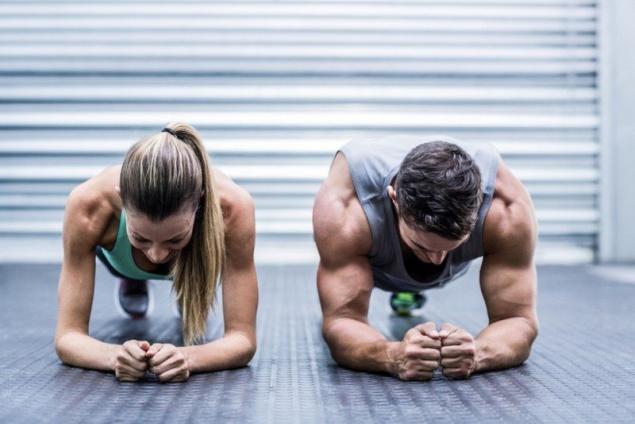
Here's a rundown of the basics of correct form:
Start in the top position of the bar. Back and legs should be flat and straight, pull on socks; body tense; his hands are at chest level, arms fully extended. Separately ensure that the head is not tilted forward – it should be in line with your back. Slowly bend your arms at an angle of 90 degrees, lowering chest towards the floor to gently touch the surface.
Pause, straining the muscles of the body, for 3 seconds, and then push yourself back up. Hands should be straight, elbows do not pinch the. Note the position of the elbows. Perfect angle from the lateral surfaces of the body — about 45 degrees. So you are effectively working on your chest muscles and prevent injuries from overexertion. Breathe, sinking, and exhale lifting; breathe through your nose, not the mouth.
Inability to correctly perform pushups may indicate a number of problem areas, depending on your weaknesses:
Strong cor will also help to prevent back pain and keep retention. To engage the core, pull the navel. The navel is attached to the transverse abdominal muscles — the internal membrane that holds the intestines inside and provides the spine and vertebrae a strong support zone.
So retracting it, you begin to reduce deep inner transverse abdominal muscles. In this position, keeping your back straight, in line with the neck, you need to be 30 to 60 seconds. If you can keep him for at least two minutes, it's just a great place to start.
If not strong enough the crust, it will indicate poor alignment of the hips sagging down or up scoring in the shape of an inverted letter "V". If you are not able to keep the bar for about two minutes, it can still say that you wear too much weight and you need to get rid of a few pounds.
Squats: rate the flexibility of the hip joint, balance and leg strengthstarting position: standing, feet slightly more than shoulder width apart. Keep the back in neutral position and the knee in the center of the feet. Slowly bend your knees, hips and ankles, sinking to a 90 degree angle. Ensure that the thighs are in line with knees and knees in line with ankles. Return to starting position. Breathe, sinking, and exhale returning to the starting position.
Which means, if you can not properly perform the squat
To properly perform a bench press the dumbbells over your head, stand with your feet shoulder-width apart, and grab one dumbbell of a suitable weight. Try not to use too heavy weight, because this will just worsen your form. For this exercise you need to perform at least 8 to 12 repetitions.
With palms inward, lift the weight to the starting position at shoulder height.
At the beginning and at the end of this exercise is very important the correct form. Raise the weight over your head, fully straightening the elbows, and then lower the weight back down to shoulders. Movements must be performed slowly and gradually, control them and avoid jerks.
I propose to do about 30 attacks during the day, whenever you get up and move. I usually do when I go from the office to the kitchen several times a day. Only make sure that the pants did not sit too tight.
The difference between stationary and walking lunges is only in the fact that in the second case, you throw yourself forward, and the former is returned to its original position. For the test, you can use any kind.
To perform the stationary lunge:
Your weaknesses can point the following:
Ceasing to move, your body inevitably begins to fade. Five simple motor tests discussed above is a simple way to learn their weaknesses, and what you need to work.published
© Dr. Joseph Mercola
P. S. And remember, only by changing their consumption — together we change the world! ©
Source: //russian.mercola.com/sites/articles/archive/2016/09/09/%D1%81%D0%BB%D0%B0%D0%B1%D1%8B%D0%B5-%D0%BC%D0%B5%D1%81%D1%82%D0%B0.aspx
Most people do not realize the deterioration of their physical form, yet they will not have an accident or they lose the ability to move as before. Of course, nothing is impossible, but at this stage, the proverbial reversal it will be much harder to do.
Fortunately, there are very simple tests that will help you to understand the current state of things.

A simple "sit test" can even predict the duration of your life.
It is believed that the way you sit and rise from the floor, indicates the risk of death over the next six years or so.
The connection of mobility and healthThese simple motor tests is based on the idea of the existence of a link between mobility and health, and if you find it difficult to comply with them - let this be an incentive to get back in shape.
"It doesn't matter whether you go to the gym from time to time or you are professionally engaged in cross-fitom, everyone should be able to perform a few movements. They are the basis, and most likely, you do every day varieties of them, without even knowing it.
Thus, the weight of daily movements in essence are sit-UPS... for Example, you pick up something, dropping, or raise their pet at the hands of..."
When it becomes difficult to perform movements such as squat to pick up something from the floor, or walking up the stairs, and your overall quality of life begins to deteriorate because lack of mobility leads to more inactivity.
Sitting is an independent risk factor for chronic diseases and premature death.
Push-UPS: assess the strength of the upper body and the bark ofa Strong core and upper body allow you to maintain good posture, balance and stability, as well as easier and safer to perform everyday movements such as reach for something or bend.
Exercises that will help to estimate the strength of the body, are the classic push-UPS and plank.
How to perform push-UPS and that means if they have not obtained

Here's a rundown of the basics of correct form:
Start in the top position of the bar. Back and legs should be flat and straight, pull on socks; body tense; his hands are at chest level, arms fully extended. Separately ensure that the head is not tilted forward – it should be in line with your back. Slowly bend your arms at an angle of 90 degrees, lowering chest towards the floor to gently touch the surface.
Pause, straining the muscles of the body, for 3 seconds, and then push yourself back up. Hands should be straight, elbows do not pinch the. Note the position of the elbows. Perfect angle from the lateral surfaces of the body — about 45 degrees. So you are effectively working on your chest muscles and prevent injuries from overexertion. Breathe, sinking, and exhale lifting; breathe through your nose, not the mouth.
Inability to correctly perform pushups may indicate a number of problem areas, depending on your weaknesses:
- Inability to bend your elbows and fully lower the chest down means you don't have enough power in arms, shoulders and chest.
- Failure to keep the back and legs in a rigid flat position, which SAG hips or lower back, testifies to the weakness of body and/or buttocks.
Strong cor will also help to prevent back pain and keep retention. To engage the core, pull the navel. The navel is attached to the transverse abdominal muscles — the internal membrane that holds the intestines inside and provides the spine and vertebrae a strong support zone.
So retracting it, you begin to reduce deep inner transverse abdominal muscles. In this position, keeping your back straight, in line with the neck, you need to be 30 to 60 seconds. If you can keep him for at least two minutes, it's just a great place to start.
If not strong enough the crust, it will indicate poor alignment of the hips sagging down or up scoring in the shape of an inverted letter "V". If you are not able to keep the bar for about two minutes, it can still say that you wear too much weight and you need to get rid of a few pounds.
Squats: rate the flexibility of the hip joint, balance and leg strengthstarting position: standing, feet slightly more than shoulder width apart. Keep the back in neutral position and the knee in the center of the feet. Slowly bend your knees, hips and ankles, sinking to a 90 degree angle. Ensure that the thighs are in line with knees and knees in line with ankles. Return to starting position. Breathe, sinking, and exhale returning to the starting position.
Which means, if you can not properly perform the squat
- Inability to bend knees and ankles, thus preventing the femur joint to perform the movement back, leads to the fact that you rise on the toes. This suggests the stiffness of the hip extensors and/or hamstrings and it would be wise to start working on improving flexibility of the hip joint.
- If when lowering or lifting the knees turned inward, it shows the weakness of the muscles of the back of the thigh and buttocks.
- 8 percent increases activation of the muscles of the anterior surface of the shoulder (anterior deltoid)
- 24 percent increased activation of the muscles back of the shoulder (posterior deltoid)
- 23 percent increased activation of the biceps muscles
To properly perform a bench press the dumbbells over your head, stand with your feet shoulder-width apart, and grab one dumbbell of a suitable weight. Try not to use too heavy weight, because this will just worsen your form. For this exercise you need to perform at least 8 to 12 repetitions.
With palms inward, lift the weight to the starting position at shoulder height.
At the beginning and at the end of this exercise is very important the correct form. Raise the weight over your head, fully straightening the elbows, and then lower the weight back down to shoulders. Movements must be performed slowly and gradually, control them and avoid jerks.
- Inability to straighten the arms directly above the head suggests a lack of range of motion in the shoulder girdle and weakness of the back muscles.
- If lifting weight, you arch your back, you could have weak core muscles, which leads to disruption of the stability, or too stiff hip flexors, which you can't align the hips and knees properly.
I propose to do about 30 attacks during the day, whenever you get up and move. I usually do when I go from the office to the kitchen several times a day. Only make sure that the pants did not sit too tight.
The difference between stationary and walking lunges is only in the fact that in the second case, you throw yourself forward, and the former is returned to its original position. For the test, you can use any kind.
To perform the stationary lunge:
- Stand up. Feet shoulder width apart. Then take a long step forward with your right foot. The heel of the front leg should firmly stand on the floor.
- Keeping the upper body straight, drop down into a lunge position, dropping left knee to the floor. Stop, just touching knee to the floor without lifting the heel of the right foot from the floor. Ideally, both legs should be bent at a 90 degree angle, and the knee of the front leg should be directly over the foot of the front leg.
- Pause for a second, and then pushes off right foot, return to starting position. Repeat with the other leg.
Your weaknesses can point the following:
- Are not far enough forward. This shows the weakness of the gluteal muscles and/or lack of flexibility of hip flexors or hamstrings. Strengthening and increasing flexibility in these areas will allow you to step more forward and deeper SAG.
- Tip the chest is too far forward. Slight movement forward is a natural thing, but excessive slope shows the weakness of the gluteal muscles and core muscles. Be sure to engage glutes and hamstrings, performing this movement and try not to lean forward.
Ceasing to move, your body inevitably begins to fade. Five simple motor tests discussed above is a simple way to learn their weaknesses, and what you need to work.published
© Dr. Joseph Mercola
P. S. And remember, only by changing their consumption — together we change the world! ©
Source: //russian.mercola.com/sites/articles/archive/2016/09/09/%D1%81%D0%BB%D0%B0%D0%B1%D1%8B%D0%B5-%D0%BC%D0%B5%D1%81%D1%82%D0%B0.aspx
Excessive parental care: an Important key to finding the "Golden mean"
Created a diode from a single molecule

